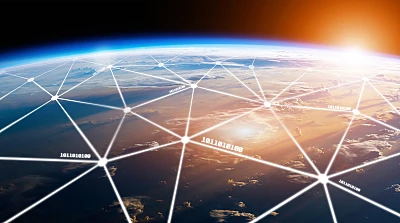Recent events have evidenced the relevance of EO data for defence and security purposes – nonetheless, because EO data (notably images) have been feeding the evening news as a tool to monitor military advances and the catastrophic impacts of the war at the gates of the EU.
In this very particular scenario we found ourselves, the relevance of access to EO data to assist in disaster management (notably for assessing post-event damage and planning civilian evacuation routes) has been proven several times over – that is why several entities with abilities to collect EO data have been making the same available to the government of Ukraine and humanitarian organizations on the ground, and have themselves drawn the attention of investors and other relevant stakeholders.
In this particular context of international political instability, States are doubling down on their investments in space defence capabilities.
As an example, the UK Defence Space Strategy, published in February 2022, expressly sets out as a priority the creation of space defence capabilities, notably on intelligence, surveillance and reconnaissance, through, among others, elements of Earth Observation. In particular, such strategy expressly mentions the development of the ISTARI Programme, which will be a global LEO satellite constellation to provide surveillance and intelligence for military operations.
In France, this year’s annual military space threat simulation exercise – ASTERX 2022 –, led by the French Space Command, brought together for the first time EU member states and the opportunity for the meeting of high-level figures, including a ministerial session on the defence and space packages, including on matters of capacity requirements.
Luxembourg also issued its Defence Space Strategy, highlighting the development of its own defence earth observation capacity, as well as the supporting of initiatives aimed at developing analytical capabilities, notably through AI.
And in the US space programmes are moving up in the budget priority list of the Department of Defence.
In the EU, the importance of developing a space dimension to defence is paramount and actions to contribute to European Defence were unveiled in February 2022. In this respect, the EU’s Strategic Compass for Security and Defence, published in March 2022, also reinforces the importance of a safe, secure and autonomous access to the space domain, as well as the paramount role of services that substitute or complement ground infrastructures for EO, satellite navigation or telecommunications. This strategic policy document foresees the development of new cutting-edge technology, such as sensors and platforms, with the aim to improve space access and protect space-based assets, and entailing the development of EO. Such initiative will be further complemented by the proposal for an EU space-based global secure communication system, including through the proposed Union Secure Connectivity Programme for 2023-2027.
NATO also issued its first public space policy, which highlights concerns notably on securing and ensuring access to space data, products, services and capabilities and the sharing of space data between the members of the organization (with space data being defined as the information acquired, produced and provided by space systems or relayed to or through space systems necessary for the provision of space-based products and services).
The members of the Combined Space Operations Initiative (CSpO) – UK, US, Australia, Canada, France, Germany and New Zeeland – also issued their Vision 2031 in February 2022.
In addition to the military applications of EO data, the potential of EO data in the context of ensuring the security and safety of people and assets has been highlighted in several recent policy items (notably, ESA’s Matosinhos Manifesto, as well as the strategy proposed by CNES for its term as CEOS Chair), thus identifying relevant areas in which to enjoy such potential (e.g., surveillance, disaster management, humanitarian emergencies).
Yet, a central (legal) issue on this scope remains: how to ensure access to the necessary space infrastructure, or at least, to the necessary EO data, by sovereign states and the downstream of such data – duly processed – to the users of the system (e.g., NGOs, civil protection agencies, among others). A specific concern especially when the main space faring nations stop cooperating in a sector that relies heavily in international cooperation, or when the relevant infrastructures/data are held by private entities, which can decide how to use and who to grant access to those infrastructures/data.
There is, also, the concern with ensuring that EO data translates into products fit for purpose and adequate to their users – among others, products that are user-friendly, products that are resilient including to interferences, jamming, spoofing, or cyberattacks, products that are broadly available to users in the context of a security event.
It awaits to see how these concerns will be addressed in the coming years in the aftermath of the times we are now living and how they will spill-over to private actors owning, developing and/or operating earth observation infrastructures and systems.
